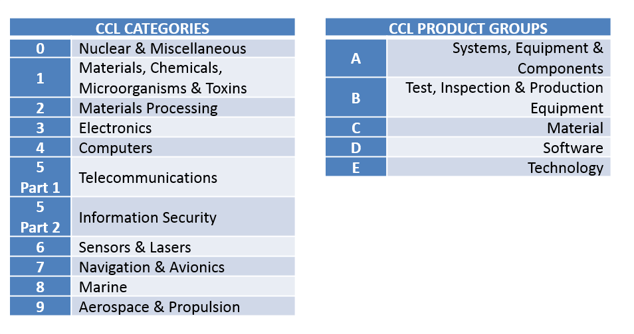
The Commerce Control List & Export Administration Regulations
When a company exports a commercial product from the United States, it must first determine if an export license is required from the Department of Commerce. The controls for exporting items (an item might be a product or a service in the form of some knowledge) is controlled by the US Department of State, specifically the Bureau of Industry & Security (BIS). The Federal Government takes an interest in what is being exported, where it might go and how it might be used. Obviously, the government doesn’t want US technology to be exported to a region or country where this technology or product could be used against the United States or to cause harm to the US or it citizens. It is interesting to note that all exported items are controlled in this fashion, regardless of value and regardless of whether they are sold or given away.
BIS identifies two types of items, ones that are purely commercial and “dual use” items that can have both commercial and military use. Both of these types of items fall under the Export Administration Regulations (EAR) that are implemented and enforced by BIS. The BIS lists all items on a Commerce Control List (CCL) along with license requirements, license exceptions and a list of items controlled. The CCL is divided into 10 categories. Each category is subdivided into 5 product groups:

The first step in the process of determining the need for an export license is to go to the Commerce Control List and find the Export Control Classification Number (ECCN) for your item. This list can be somewhat confusing but if you are not sure, you can always ask the BIS for an interpretation of what ECCN applies to your item. Once you have the ECCN, you will notice specific instructions in the Commerce Control List for each ECCN as to licensing requirements. If your item does not have an ECCN, it is classified as an EAR99 item. Generally, EAR99 items do not require an export license unless they are going to an embargoed country, an end-user of concern or a prohibited end use.
The next step is to determine if the item will go to an embargoed country or region. The Commerce Country Chart is used to identify requirements for the destination of export. For instance, the CCL will identify the ECCN for your item. Under the description of the ECCN the license requirements will identify reasons for control of this item. Using the reason codes in the Commerce Country Chart under the destination country will identify whether or not an export license is required for that item to that country.
Finally you must also screen the customer that you are exporting to. The BIS keeps several current lists of organizations and individuals that exports should be denied. These are found in the BIS Lists of Parties of Concern. You should do the diligence to make sure that your party is not on this list.
Now that you have done this diligence, you should maintain a documented record of your research in this area (either proving you don’t need an export license or proving you do) for a minimum of 5 years. Of course, the BIS is available for help in determining your item classification and helping in determining if you need an export license. The SNAP-R program is a good tool to use to request a determination from BIS.